Atlantida

When I was researching eco-communities before coming to Colombia, one kept popping up in my searches: Atlántida. So I contacted them early in my journey here. There proved to be some difficulties in organising a visit as the access road was not passable for some time, and for reasons that I didn’t really understand (phone Spanish still not being altogether understandable for me). Landslides happen in the area due to heavy rains in the rainy season and I figured this must have been the problem. Over a few months I kept in contact with Atlántida and finally in the end of November Andrea told me that there was better access, so I could visit. I arranged to go for a week.
From Popayán I got a small bus and was dropped at the side of the road in a place called El Cairo on the very busy main road to Cali.I had been told to take a ‘moto’ to Atlántida. Across from my stop a gang of motorcyclists sat with their bikes. I asked one of these young mototaxi drivers, he said he knew the way so he took my overloaded mochilla (backpack) and we prepared to set off. I must explain: my agreement with Atlántida was that I would volunteer for a week. A volunteer gets a cabin to stay in, they pay 3,000 Colombian pesos (a little less than €1) per day to use the kitchen and they bring all their own food. For a week, this is quite a few kilos of food!! I bought it in Popayán and cursed the weight of it as I bumbled around. And now we were going to do a real Colombian ‘move’ on it and get all this stuff on a motorbike!
So, my mochilla was up front between the driver’s arms, I was sitting behind with a daypack on my back and a few kilos of more bruisable fruit and veg between me and the driver. We set off. Immediately I felt there was something strange going on with the back tyre: it felt like we were skidding on corners. I realised the rear suspension was ‘wobbly’. We weren’t actually skidding but it was unsettling on corners and I found myself feeling very vulnerable and praying profusely as I held my bag of veg with one arm and clung to the back of the bike with the other. The driver wore a helmet but there wasn’t one for me. I wonder sometimes about how different things like safety are from country to country. Imagine heading through Dublin like this? We wouldn’t get far. 40 years ago perhaps it was a common site to have an overloaded bike to get from A to B around Ireland but now the car dominates. Here in Colombia motorbikes are a lot cheaper to buy and run, and can cross trickier terrain, so all shapes and makes of motorbikes are plentiful throughout the country.
Despite the wonky rear suspension, the road didn’t seem bad. It fact it was a perfectly fine tarmacked road with the odd pothole. I wondered what Andrea had been talking about in our communications. After 10minutes we came to, Cajibio: the little town that was on the address for Atlántida. Great, we were there finally there and I could get off this bike. I had read that Atlántida had 20 hectares of forest and now I wondered where all the land could be. We drove into Cajibio… and we drove out of Cajibio. Yes of course the site must be outside. We turned a corner and in one vista I saw what Andrea had meant about the road: there were roadwork’s with potholes you could hide to motorbike in! Thankfully the road works ended after about 500 metres, but then the road took on a whole other personality! It was a mud mire! It was a wide road with lots and lots of bike traffic all churning up the mud!! Bikes with two people and baggage, bikes with three people and groceries, families, friends, bikes, puddles and lots and lots of MUD. We moved more slowly and slide quite substantially at one stage and I nearly shat a brick… I had given up praying, I was white knuckled and just holding my breath…every now and then I’d realise I wasn’t breathing and it tell myself to relax…and at the same time I marvelled at all this traffic and the hilarity of the situation, and found myself feeling happier and lighter when I reminded myself that I was in Colombia, and this is life going on as normal near Caijibio! Finally after 20 mins of this muddy road we got to the gates of Atlántida. I thanked my moto driver, pried my fingers out of the veg that I had been clinging to, took my mochila and began to walk…grateful to be on my feet again.
The main community building at Atlantida
I walked up a quiet lane under the shade of lush green trees and wished I had a donkey to carry all my stuff. The first members of the community I met were clad in bee suits (it felt like a scene from E.T….) carrying a beehive and they looked far too occupied to talk to me. I wandered into the courtyard of a building and finally saw someone who I could talk to, it turned out to be Andrea who I had been speaking to on the phone. She warmly welcomed me and introduced me to some other community members that were working nearby. I was shown my cabin and the kitchen – it was lunchtime so I got to reduce my food bundle and prepared myself some food.
Mandalas and murals from around Atlántida
I went for a walk to get my bearings. There are lots of really beautiful structures and lots of land, some semi managed and some left quite beautifully wild. There is accommodation for about 40 people in various cabanas on site. There is a Temezcal (sweat lodge) area with three structures and one fire circle. There is a huge Mallocca (traditional community house) with a stunning structure, which was the heart of the Llamado de la montaña (the annual gathering of Colombian eco-communities) a few years ago. As I sat in this space I imagined it holding 300 singing smiling Colombians! What a joyful image! In other parts of the site there are various meeting places, a women’s gathering tree with a women’s Temezcal and women’s meeting house, and there are various sites for vision quests. Later I met Jorge one of the founders of this version of Atlántida: it has existed as a site for workshops and ceremonies for 34 years but it is in the last 14years that it became a community and in recent years reduced significantly in community members and is now a very small group of 9: a very quiet community that still provides a beautiful venue for workshops and ceremonies. The group follows the Red Path in Shamanism and also Sufism. They regularly hold traditional ceremonies such as Temezcal, fire ceremonies, moon ceremonies etc.
Walks around the site with a furry friend
Sugar cane (an absolute staple food in Colombia)
Accommodation on site
My hut-home in Atlántida for a week
One of the three Temescal structures
I realised I really didn’t have that much background information on Atlántida: and in my first few days it felt like a strange community to me: the people there live in separate houses, they don’t eat together and I didn’t witness them meeting. In fact Jorge said that there are times when the community don’t see one another for days. Their main work is arranging courses and taking care of the site. They move with the ebbs and flows of the courses which they work hard to prepare and run them, and then afterwards they rest. I had arrived just after a big weekend workshop so people were in a sort of a relaxed ebb. I learned afterwards that what I had experienced was the remains of a previous community that had collapsed. More people had lived here but some disagreement(s) had caused most of them to leave. The site hd a sadness to it: like a seaside town in winter, but still held some kind of magic for me.
As it was so quiet while I was there I decided to make the most of it and take this time as a little semi-retreat for myself: I appreciated that I had my own little hut where I could paint, there were woods to walk in, there was a space to dance, a kitchen to cook in. I worked in the mornings from 8am until noon and my afternoons and evenings were my own. I so enjoyed this time and space to be in nature, to create and to really take good care of myself. I really enjoyed preparing good food. Mostly it was just me in a big kitchen but I was happy: I have been missing these simple things that define home for me.
The communal kitchen
I volunteered 4 hours each day, six days week. I determined my hours and work and decided to work in the mornings outside. I joined a team of local workers who were preparing an area for a sun dance ceremony that will happen next May. A large circular area of land had recently been cleared and all trees (sadly) had been removed and the land flattened. I was transplanting small squares of grass to help create a large grass covered area for the ceremony participants. I did enjoy the repetitive nature of digging lines of holes, cutting squares of grass sods and placing them in the ground. I imagined the feet that would dance on this land. The Sun Dance is from the plains traditions in North America and is one of the many traditional ceremonies that was banned after European colonisation of the Americas in order to suppress indigenous cultures. The ban was lifted in the late 1970’s. It is traditionally a community gathering and a prayer for healing. Individuals make sacrifices on behalf of their community. It is a ceremony danced in a circle for 4 days with traditional drumming and includes dances and songs that have been passed down through many generations, a sacred fire, praying with a ceremonial pipe fasting from food and water and, in some cases, the ceremonial piercing of skin and a trial of physical endurance. As I planted I wished the participants well… I wished them strength and tolerance. And I really appreciated this connection of traditions between the north and south of this continent. I have felt a sadness in me when I have participated in these Red Path ceremonies in Europe, because we have lost so many of our ancient traditions and ceremonies: they were wiped out my religions and great witch hunts. We have lost so much and I realise that it is this need for the ancient connections to earth and sun, ancestors and history that I long for. As I worked on the land in Atlántida I appreciated what they offer there: keeping these ancient lineages of ceremonies alive: keeping the connections alive: tending them, giving thanks for them.
Transplanting grass sods
Preparing the circular field for the Sun Dance Ceremony
While I was in Atlántida I had my first real experience of the rainy season in Colombia (the reason for the muddy road. Up until now there had been some heavy rains in recent weeks but it hadn’t been anything crazy. At one stage in Atlántida it rained for 14 hours straight! The rain brought a lot of mosquitos, and the opportunity the practice the art of not scratching. This proved to be the only method to keep me from driving myself crazing from the itchiness. A few hours of not scratching prevents many day of itchy torture!
But other than minor mosquito torment my time in Atlantida was quite precious really: I have lovely memories of being snug in my hut painting as the rain poured outside, dancing at dawn with all the sounds of the garden coming to life, preparing food by headlamp light when the electricity went out. I remember a liquorice like smell in the garden one day, I followed the scent and found strange star-shaped seeds. Star Anise!!! It was quite a gorgeous moment as I discovered my first Illicium verum (native to China as I have since found out) and its star shaped babies. It is moments like these that sum up Atlántida for me: the chance to explore and appreciate the site: and all the little things, the small sensory experiences that bring so much richness into life.
Painting in Atlántida
And I enjoyed the random greetings from the residents; random chats on the sites many camino’s. I got a chance to do a tour that Andrea held one weekend for a group of visitors that arrived. It was great to get a sense of the history of the place and its interconnection in the eco-community network in Colombia. I had random conversations with Jorge and his daughter. Beatrice has a sweet connection and would hug when we met; she lived with her daughter Elena and Elena’s partner and their little girl. I danced a few times with Elena and her daughter and enjoyed a sweet evening meal with this little family. And I enjoyed the company of the dogs on site: There are three dogs – a large crazy goofy Alsatian who has an insanely scary bark but is an absolute baby. A bulldog who is the most crazy I’ve ever seen any dog about sticks and an old golden Labrador who moseys around.
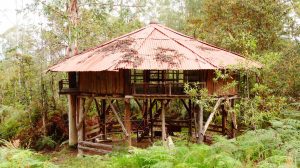 Women’s meeting house
Women’s meeting house
One of the homes on the site with he Malocca in the background
While in Atlántida there was another volunteer: an older gentleman in his late 60’s or early 70’s and without any family. He was there as he wants to be in a community. It is not a country you want to get old in without family. But the community are not currently open to new members and I could sense this mans frustration as he wanted to make a space there for himself but was not (initially anyway) being accepted. Joining a community is not necessarily easy: many groups are focused on the work that they are doing, the processes that they are going through. And it is quite a big thing for a small community to accept a new member in, and in my experience some even struggle to engage with volunteers. Each community has their processes and timeframes for engaging with and or accepting new people.
I wondered about my fellow volunteer and his search for a community and I wondered about the role of intentional communities for the ageing. Old folks homes are a type of community but not integrated with different ages and often not well integrated with towns and villages. It would be wonderful if these could be combined with other aspects of community to create truly sustainable and nurturing places for all ages of life. Our older generations are such wise teachers for children: I wondered about those who are growing old alone and about young parents struggling to take care of kids, children and teenagers in need of some wisdom and guidance and I wondered how we could connect these groups in creative and inspiring ways. We’ll all get there someday, hopefully, and it would make sense that we get creative with some future solutions for our ageing populations!
The native people of the American continent lived in strong communities, they took care of their elderly, they nourished their kids in community, and they danced and sang and took part in large community ceremonies. I wondered about how Atlántida is inspiring better ways of living: working with the healing power of nature in connection with soil and spirit. And I wondered what you the reader can glean from my account of this place: rather than perhaps wanting to visit, what is being done here that might inspire you to bring change into your life? Is there a way of reaching out to connect with the elderly in your community? Are there ways of creating simple ceremonies that celebrate our ancestors; where we have come from?
The Wiphala: a square emblem/flag, representing some of the native peoples of the Andes that include Bolivia, Peru, Ecuador parts of Argentina Chile and Colombia.
I realise how this journey is changing my perception of communities: I used to think that a community was a collection of houses where there is a sort of agreements that everyone knows to abide by: you buy a house or build a house and then people just get on with life and there are gardens that produce vegetables. But this is not how they are in Colombia: each one is so very different.
I am curious about how people start and maintain a life in community: you can start a community with a group of friends or like-minded people, or find an existing community where you feel ready to invest time and energy to create home. I know people who have stumbled across communities easily, others who have had enough money to be able to build in communities. Whatever way it begins it needs to be followed by intention and dedication, like in any long-term relationship, in order to capture the connection, sense of purpose and the chance to live more closely with the land that community offers. And I believe this can be brought into all of our lives where we are, allowing space for all types of connections and for our individual and collective co-creativity.
I didn’t get a sense of community in Atlántida but I did feel a sort of magic in the site and I would love to be there for some of the rituals that they hold. Atlántida offers a sacred space for indigenous ceremonies; creating and strengthening our connection with the great spirit, the divine, nature and to the arc of time: with our ancestors and our descendants. These practices humble us and reveal more life to us allowing space and time for creativity and connection. Perhaps like the ebbs and flows of its workshops Atlántida is simply resting for a while before it takes on a new community constellation.
After my agreed week I left Atlántida, this time in convoy with two other community members, all of us on mototaxis. The road had dried up considerably and I was free of my food bags so I got to enjoy the thirty minute bike ride back to El Cairo, only praying on the odd corner. From my stop I took the bus to Cali and from there headed north to Eje Cafetera (the coffee axis!). More anon….
My project of exploring community is fully supported through my creativity: through the sale of my art and by a virtual online community through crowd funding. If you would like to support me on this journey you can check out my art on www.sineadcullen.com or make a donation on my Crowd funding campaign https://www.gofundme.com/LetsCreate or through PayPal by using my email address: sinead.a.cullen@gmail.com
REFERENCES
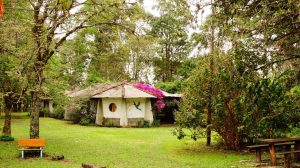

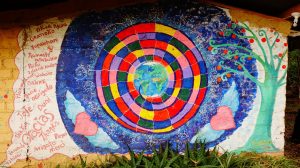
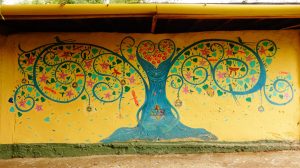
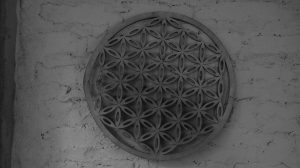
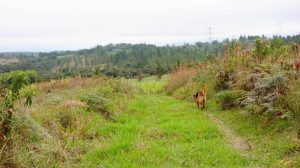
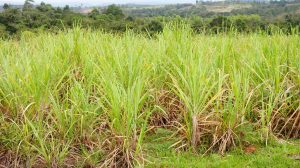
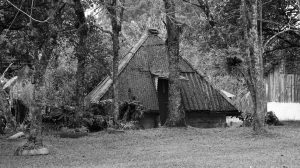
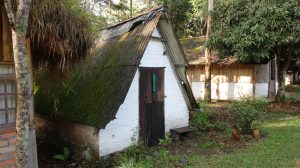
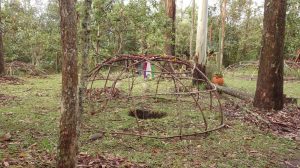
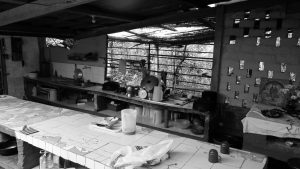

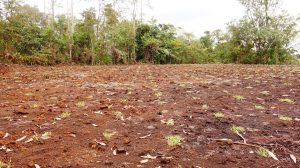
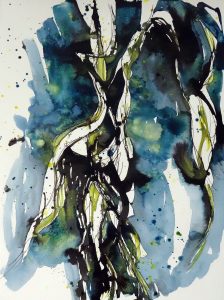

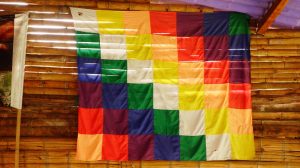
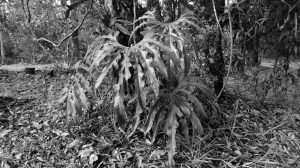
Recent Comments